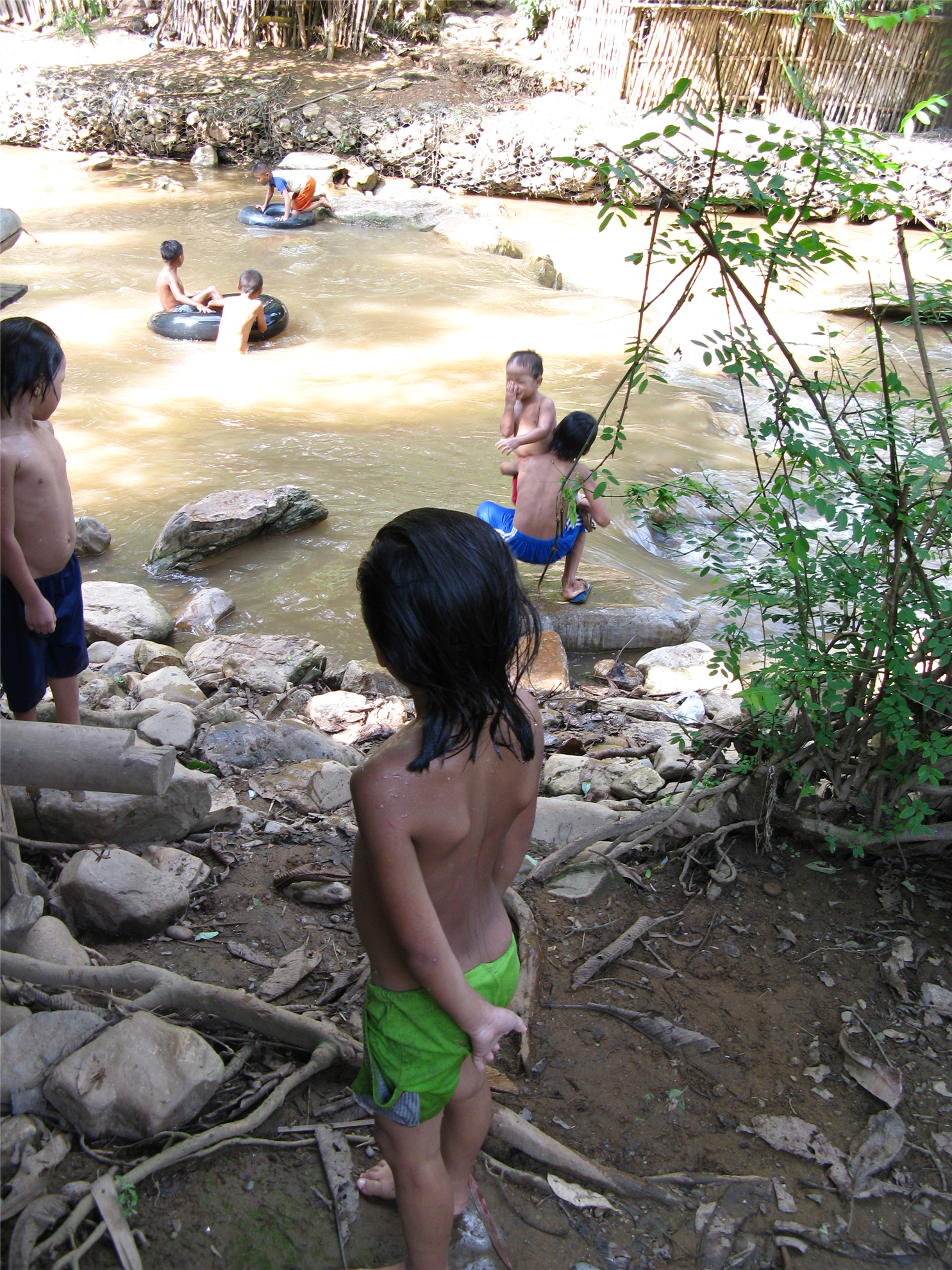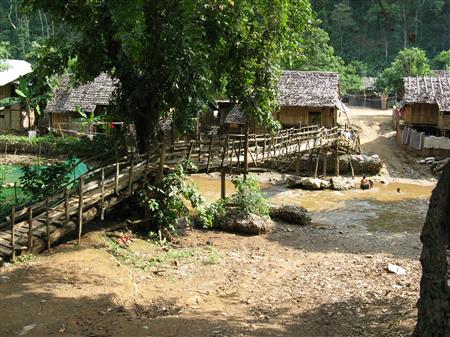Life in a Refugee Camp
Posted by Mike Lake
Life in a Refugee Camp
The question Bill Mason asked stumped me. "Did you like it?" CMIRC's sergeant-at-arms asked of my experience volunteering as a teacher, both with the U.S. Peace Corps and in a Karen refugee camp. Does anyone like living without running water or electricity? Without TV or the internet? Without washing machines or refrigerators? Without family or friends? As with most subjective questions, the answer to Bill's query is, at least for me, "depends." Depends on how much reward you get from helping others. Depends on how much you like to challenge yourself. Depends on how well you can adapt to a "foreign" way of living, and for how long.
But for the thousands of Karen who've fled Burma, the question of "like" is moot - they don't have much choice. Once they reach one of the many camps dotting the Thai/Burma border (pictured below), the "stateless people," as they're technically known, live in a kind of limbo. They have just enough housing, food and clothing to survive. The camps have schools to occupy children, but once they graduate, there's not much for them to do but wait. And some of them have been waiting for years.


CMIRC has pitched in to help the Karen Women's Organization fund preschools in the camps, including the Mae Ra Moe Luang Camp, where I lived for two months in 2005 and again in 2010 (camp layout below). Our club also supports the Mae Tao Clinic, which has a presence in most camps in the form of dormitories for orphans, and these dorms could always use blankets, mosquito nets, kids clothing, and books & games. Our club is gearing up to help the Burma Children Health Fund House in Chiang Mai by donating similar items, so it seems that many of the CMIRC projects are dovetailing nicely.
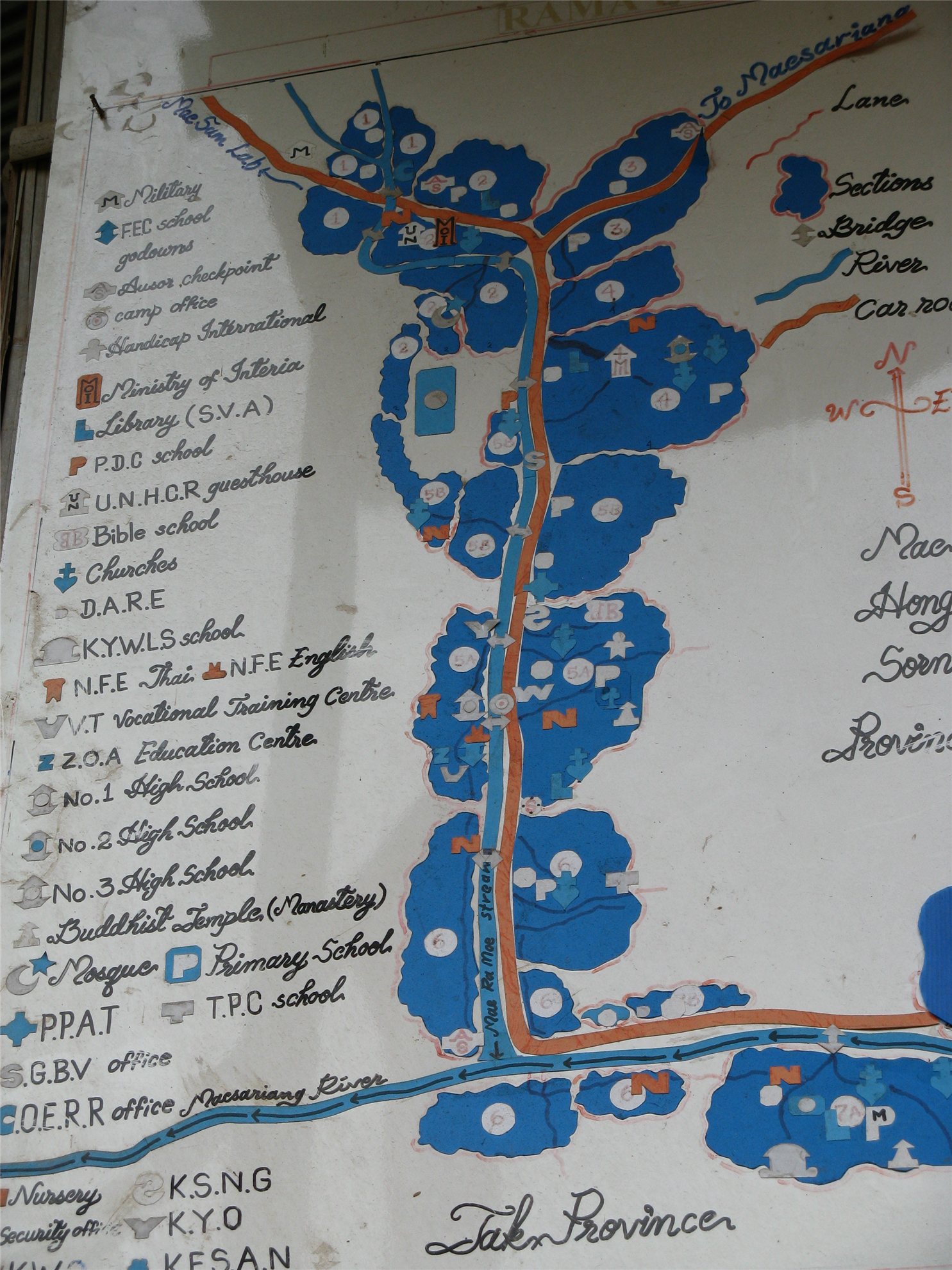
The walk from section 1 down to section 8A follows Mae Ra Moe "stream" for about seven kilometers and takes about two hours.
The camp looks deceptively pleasant - almost resort like in its snug little valley, but looks are deceptive. With recent drastic cutbacks in the monthly allotment of rice to adults (15 kgs to 7.5 kgs), many people are undernourished and must spend most of their waking hours scavenging for bamboo shoots, ant eggs, fingerling fish, and anything else they can find to assuage their hunger.
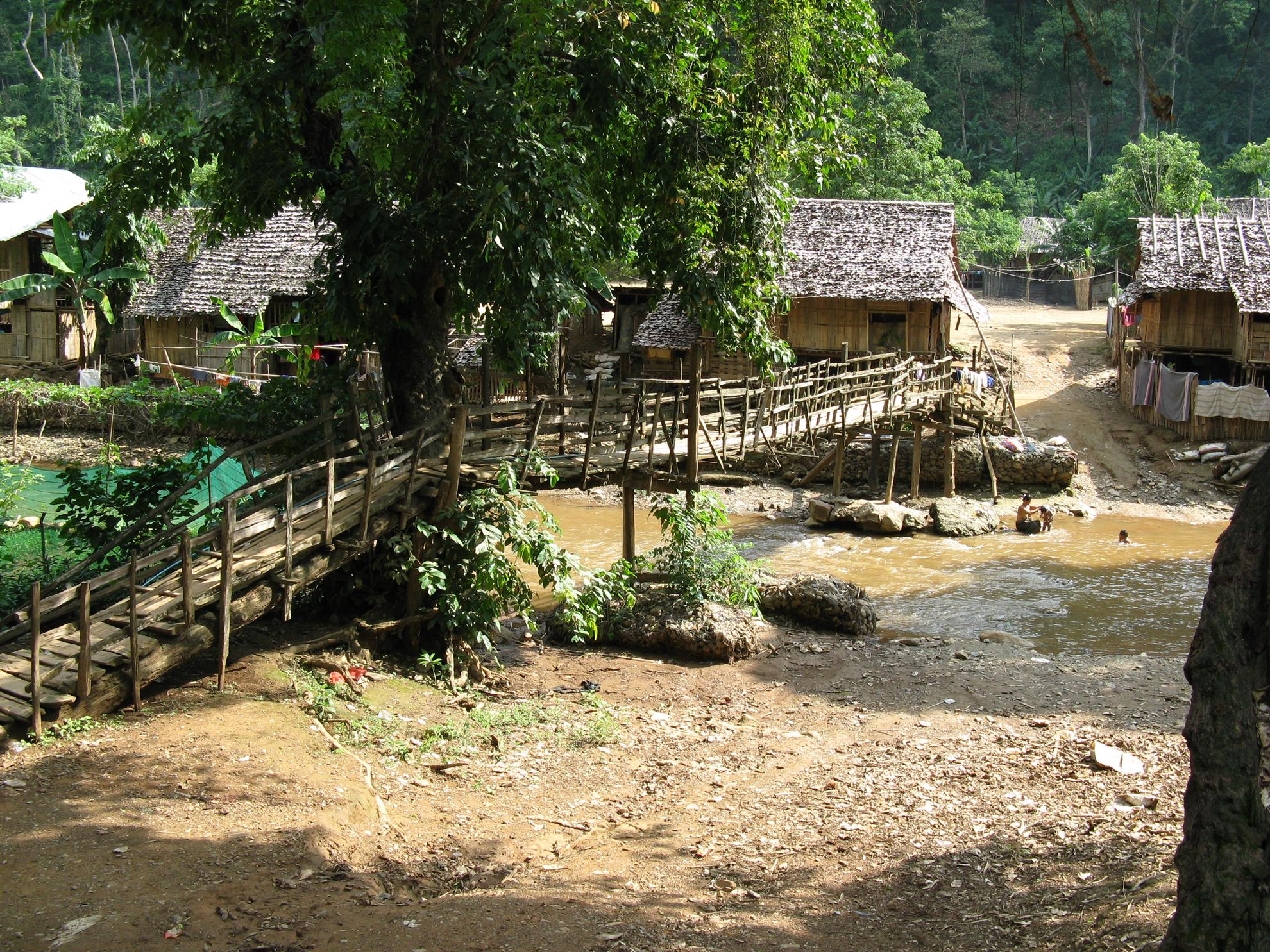
About 14,000 Karen now live in the Mae Ra Moe Luang camp in bamboo and thatch houses like the ones pictured above. No running water or regular electricity means no refrigeration - food must be found and cooked each day.
But despite the hardships, the Karen in the camps try to remain upbeat, hopeful, and dignified. They educate themselves and welcome westerners warmly, whether as English teachers, dance instructors, artists, or sports coaches.
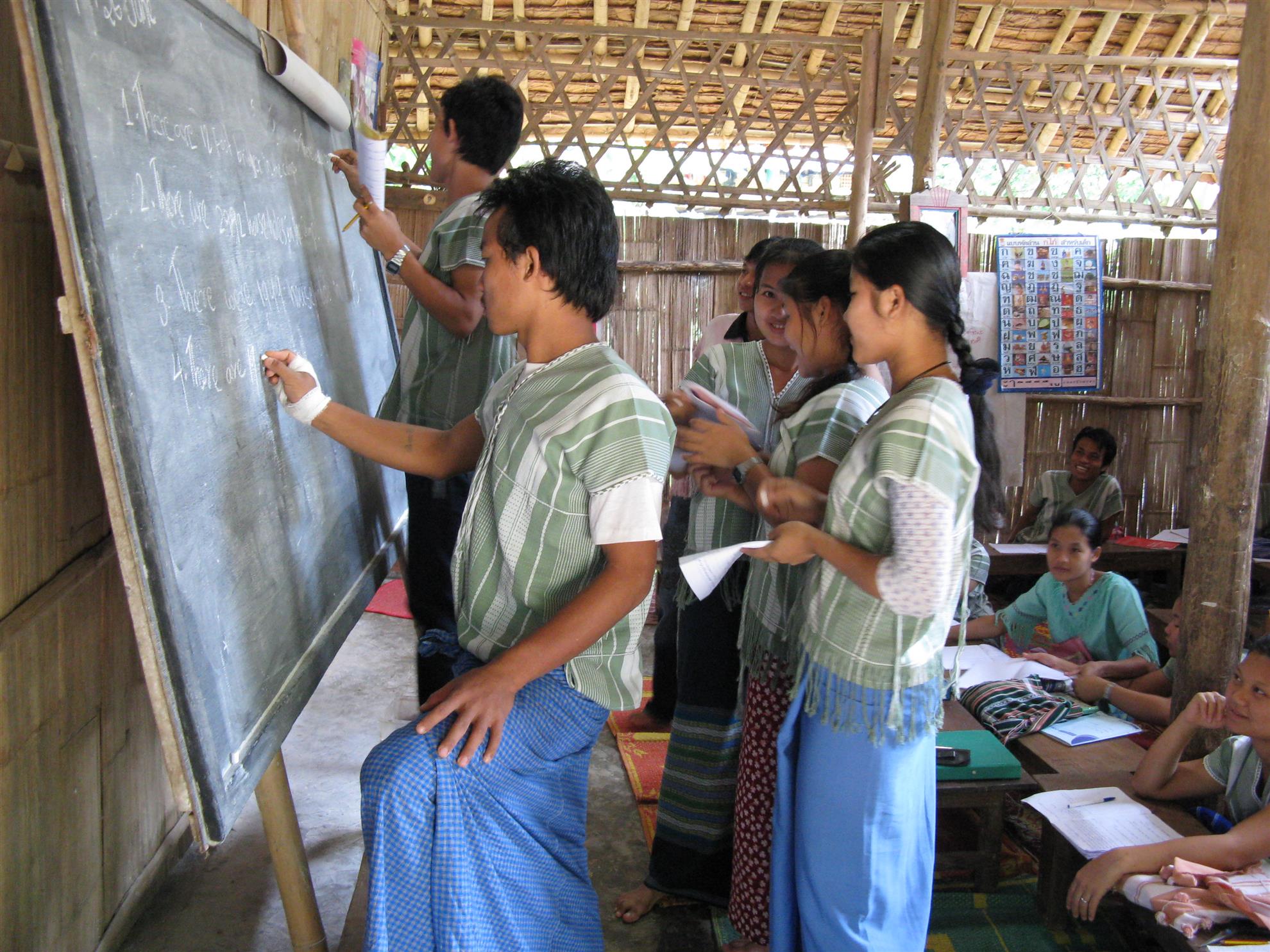
Once these students at the Personal Development Course School (where I taught) graduate, they'll join the thousands of adults in the camp who are waiting, waiting, waiting...
And of course, like kids everywhere, Karen children will find ways to have fun, regardless of the circumstances. It doesn't take much to help improve these children's quality of life, and I'm proud to be part of an organization that recognizes this simple truth and does its best to help.
